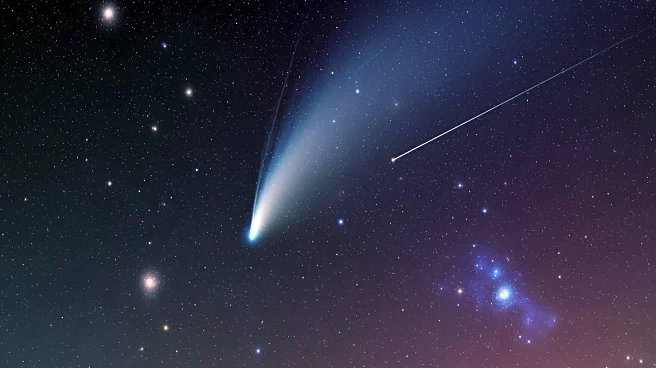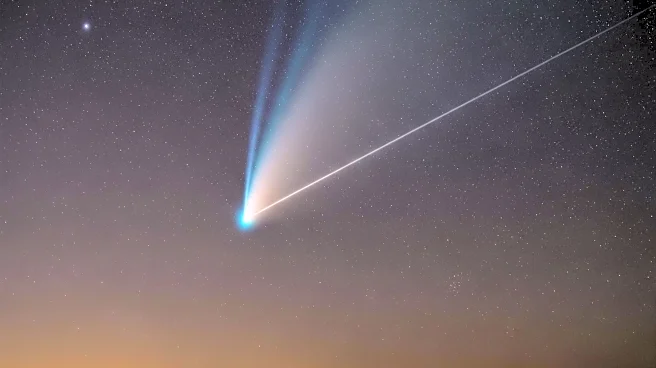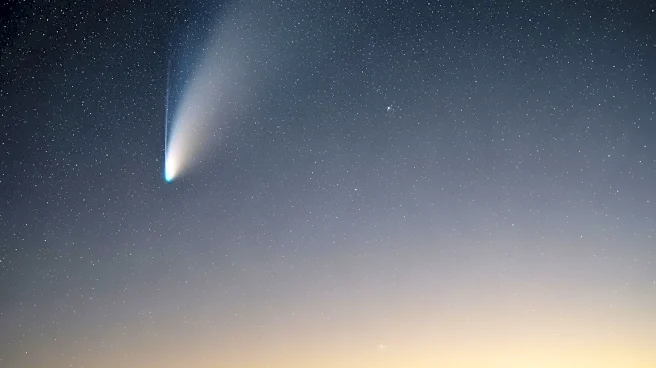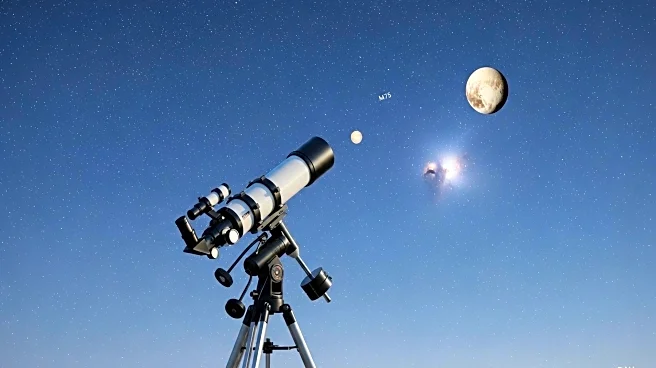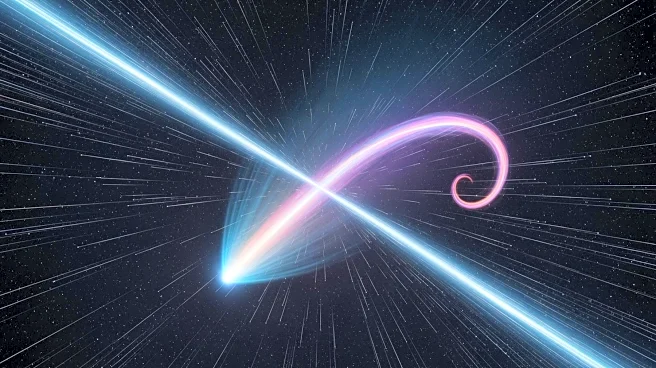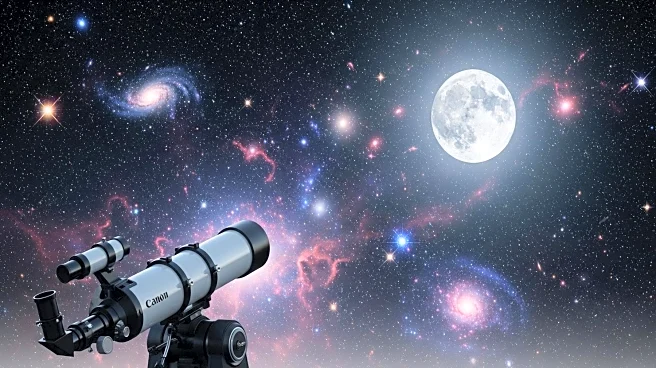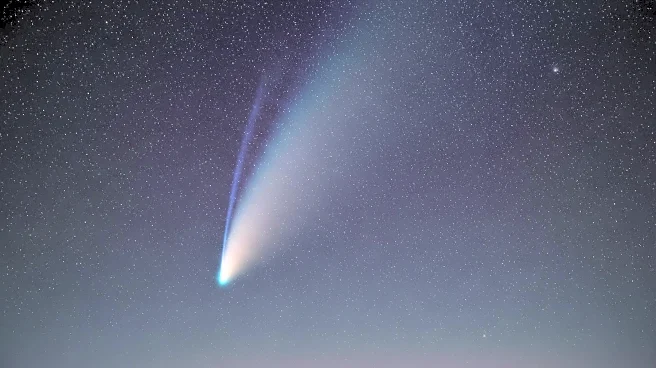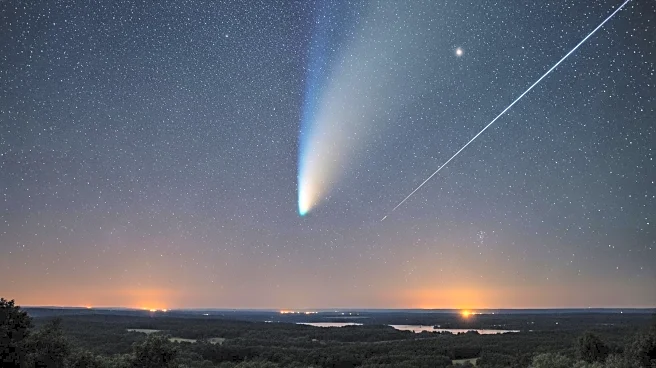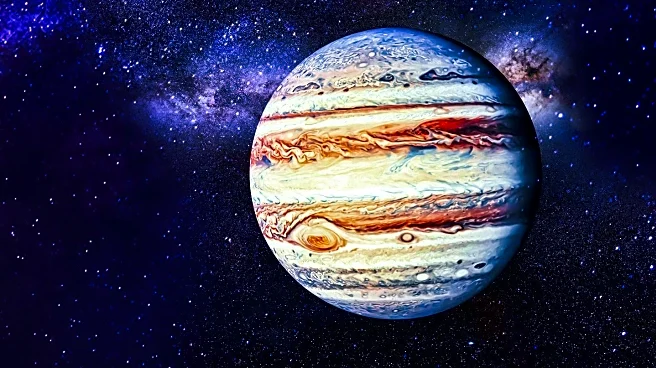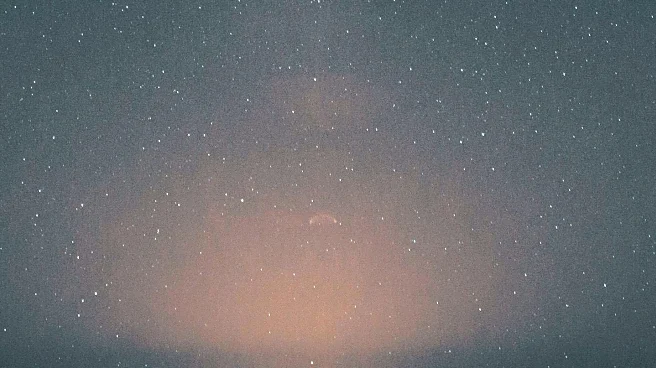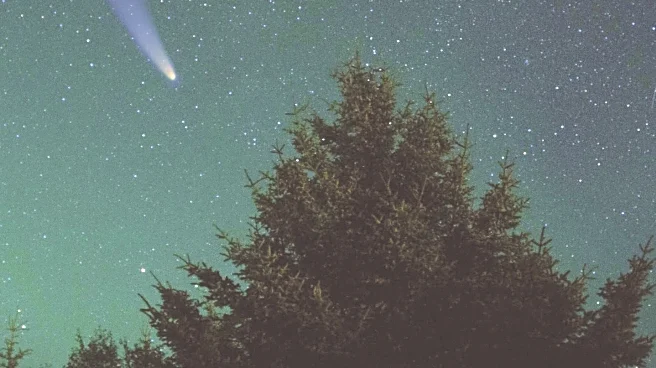What's Happening?
Comet C/2025 A6 (Lemmon) is currently visible in the predawn sky, positioned in the constellation Canes Venatici. Observers can spot the comet approximately 1.5° southeast of Chara, with its closest approach
to Earth expected on October 21. The comet is observable at magnitude 5.7, making it accessible with binoculars or a low-power telescope. Astronomy enthusiasts are encouraged to use long exposure photography to capture the comet's green coma, a result of diatomic carbon excited by sunlight. The article provides specific local times for sunrise, sunset, moonrise, and moonset, alongside the Moon's waning crescent phase, for a location at 40° N 90° W.
Why It's Important?
The visibility of Comet Lemmon offers a unique opportunity for amateur astronomers and sky watchers to observe a celestial event that is not frequently visible. This event can stimulate interest in astronomy and provide educational opportunities for schools and community groups. The comet's appearance also highlights the importance of astronomical observations in understanding celestial mechanics and the composition of comets. Observing such events can inspire future generations to pursue careers in science and technology, contributing to advancements in space exploration and research.
What's Next?
Comet Lemmon will reach its closest approach to Earth on October 21, offering the best viewing conditions. Astronomy enthusiasts and educators may organize viewing events or workshops to maximize public engagement. As the comet continues its path, further observations may provide insights into its trajectory and composition. The article suggests revisiting the comet throughout the month, indicating ongoing interest and potential updates on its visibility and characteristics.
Beyond the Headlines
The observation of Comet Lemmon can foster a sense of wonder and curiosity about the universe, encouraging individuals to explore the broader implications of space phenomena. It also underscores the role of amateur astronomers in contributing to scientific knowledge through observations and data collection. This event may lead to discussions on the importance of preserving dark skies and reducing light pollution to enhance astronomical observations.
